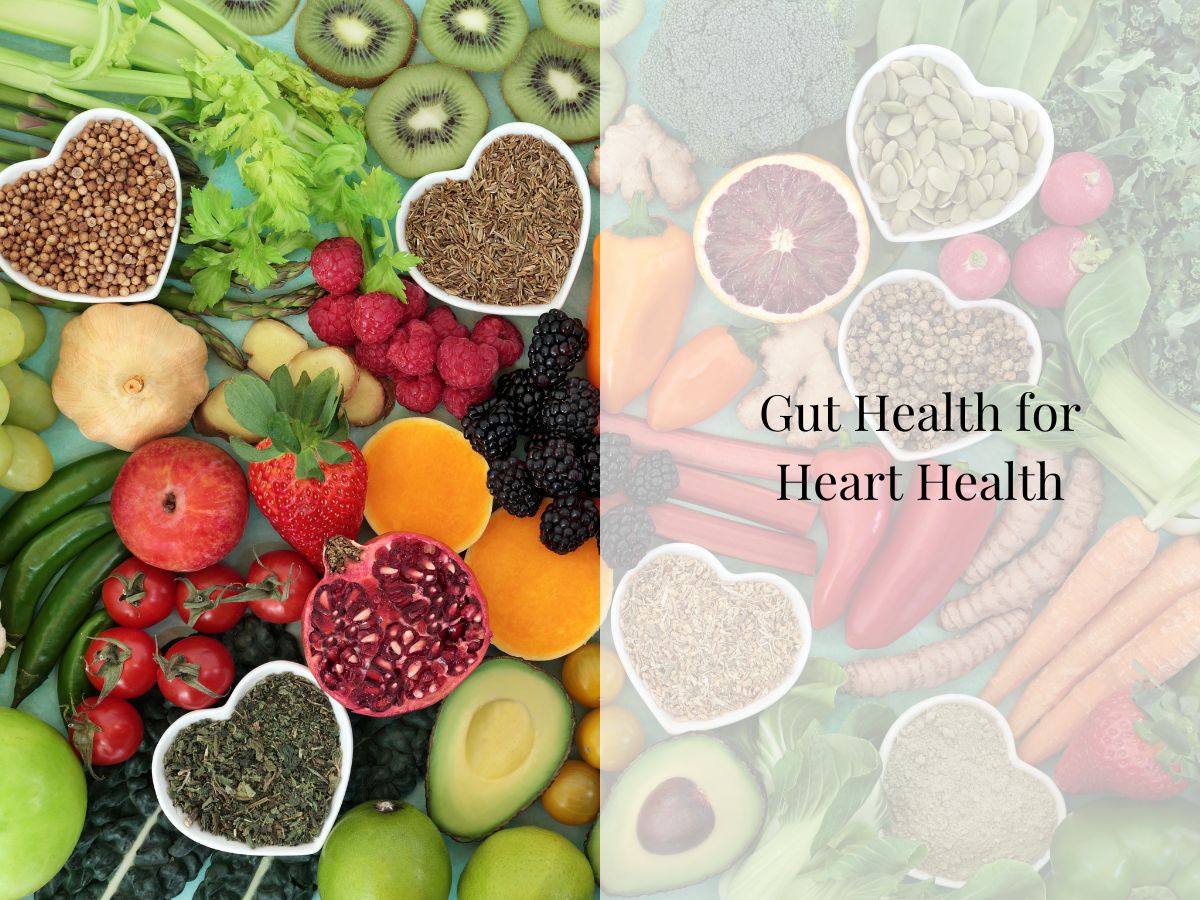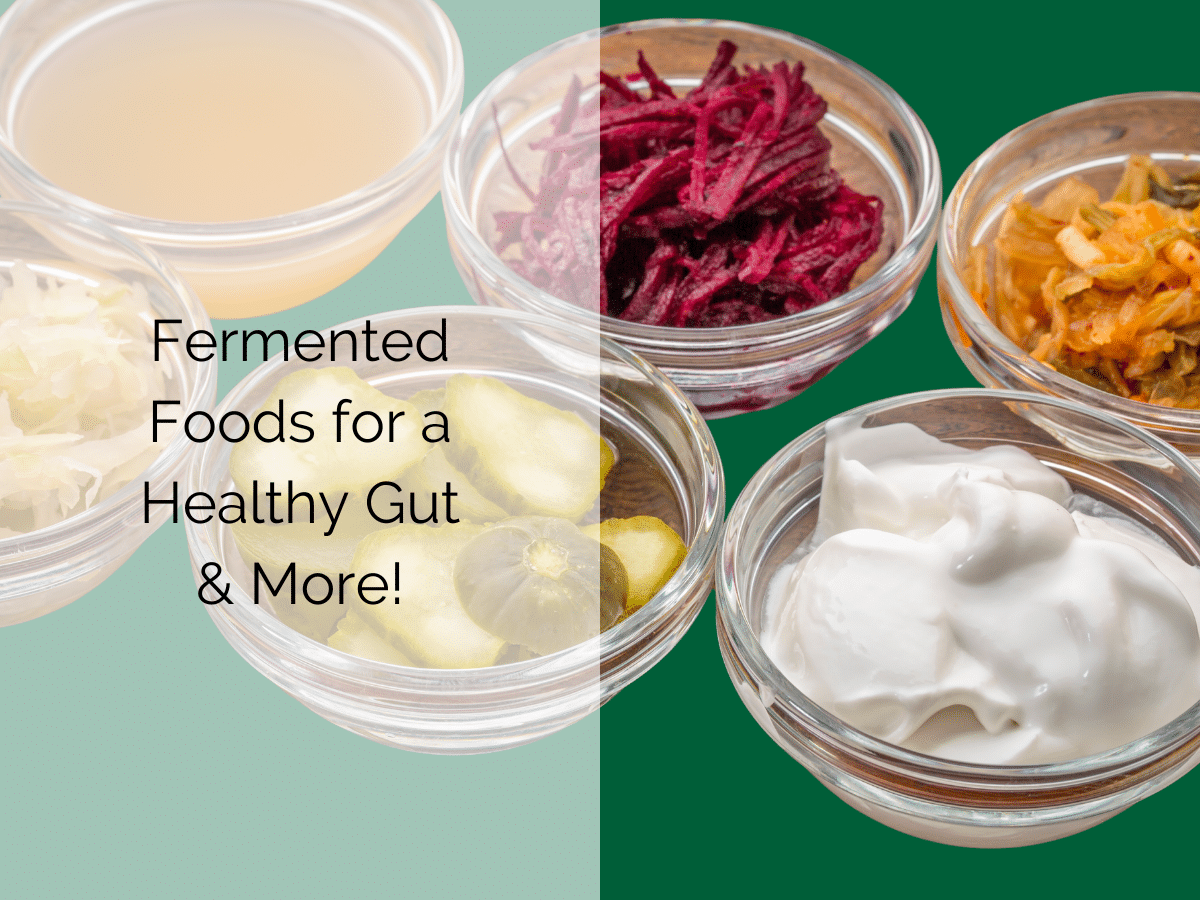

Fermented Foods for a Healthy Gut & More
Naturally, fermented foods are getting a lot of attention these days. Fermented foods have been a staple of traditional diets for centuries by providing a natural way to preserve, enhance flavor, and boost the nutritional value of foods.
Fermentation uses beneficial and ‘live’ bacteria and yeast to convert sugars found in food into lactic acid. This process chemically changes the food, which preserves the food and increases its shelf life, makes the food easier to digest, and creates that tangy, sour flavor. Eating fermented (or ‘cultured’) foods is also a convenient way to get a daily dose of probiotics.
Probiotics are ‘live microorganisms’ that provide a health benefit to the host when administered in adequate amounts. Most think about just taking a probiotic supplement or pill. But did you know that fermented foods are a good source of probiotics?
Studies indicate that fermented foods support overall health. The gut microbiome is a complex community of microorganisms that play a crucial role in the digestive system. It includes both beneficial and harmful bacteria, and a healthy balance of both is necessary for optimal gut health. Some of the benefits of fermented foods include:
- Improved digestion and cognitive function.
- Reduced overall inflammation.
- Improved immunity
- Associated with lower blood pressure, BMI, plasma glucose, insulin, triglycerides, and higher HDL cholesterol.
- Reduced harmful yeast and microbes in the gut.
Now, you are probably wondering how you can get these fabulous, fermented foods into your diet. Check the ingredient label for ‘live’ cultures to ensure health benefits. ‘Live and active cultures’ are better than ‘made with active cultures.’ Shelf-stable versions of sauerkraut, kimchi, and pickles no longer contain ‘live’ microorganisms. After fermentation, the product may be heat-treated, which kills off both good and bad bacteria. Common fermented foods are as follows:
- Yogurt
- Kefir
- Water Kefir
- Sauerkraut
- Kimchi
- Kombucha
- Miso
Dairy-Based and Dairy-Free Fermentation
Yogurt and kefir are fermented with ‘starter culture’ and ‘kefir grains,’ respectively. The lactose or milk sugar is fermented to create lactic acid, which contributes to the tangy taste. Lactic acid also reduces the pH causing the milk to thicken.
Yogurt is one of the most popular fermented foods. Yogurt is traditionally a dairy product made from the fermentation of milk (cow, goat, sheep, etc.) by lactic acid and bacteria. Yogurt can also be made from plant-based milks like almond, cashew, coconut, and soy.
Kefir is also a fermented milk product that tastes like an effervescent, drinkable yogurt. It originated in the Caucasus Mountains. This fermented drink is one of the most diverse sources of beneficial bacteria and yeasts. A 2019 study found that kefir can contain more than 50 species of probiotic bacteria and yeasts.
Water kefir is a dairy-free version of kefir. Water kefir is an option for those looking for a non-dairy alternative to milk kefir. It’s made by adding water kefir grains to sugar water and allowing it to ferment.
Vegetable-Based Fermentation
Fermented vegetables, such as sauerkraut and kimchi, are a great way to incorporate more fermented foods into your diet. Most fermented vegetables are cultured through a process called lactic acid fermentation (or lacto-fermentation), which occurs when veggies are chopped and salted. Fermented veggies contain high acidity or low pH making them shelf-safe and safe to consume for longer than fresh vegetables.
Sauerkraut has very long roots dating back 2,000 years or more. Sauerkraut means “sour cabbage” in German. Although, it’s believed that the Chinese concocted sour cabbage! All sour cabbage is made by adding salt and allowing it to ferment.
Kimchi is a traditional, fermented Korean side dish dating back hundreds of years. There are dozens of recipes, but the main ingredients include napa cabbage, radish, scallion, cucumber, and red chili paste. Kimchi is considered Korea’s national dish. True kimchi must undergo fermentation inside tightly sealed glass jars. This process can take several days to several months.
Fun Fact: The average person in Korea eats almost 80 pounds of kimchi per year!
Other Fermented Foods
Kombucha is a traditional Japanese fermented tea known for its tangy, fizzy taste. It’s made by adding a SCOBY (symbiotic culture of bacteria and yeast) to sweetened tea and allowing it to ferment. If you’re new to kombucha, start with small amounts and work up. Here’s a great article on how to start drinking kombucha.
For more than 1,300 years, the Japanese have cultivated miso for its robust flavor and nutritious properties. The fermentation process breaks the proteins and creates an umami flavor. All miso is created using soybeans, salt, and water, but the type of miso is determined by which grain (rice, barley, or soybean) is paired with koji mold spores. Barley miso or mugi miso is not gluten-free.
How Often Should You Eat Fermented Foods?
If you’re new to fermented foods, start small and go slow. You don’t want to jump in too quickly. Eating too many can backfire leading to gas, bloating, indigestion, and even diarrhea. All the symptoms you might be trying to fix. By starting small and going slow, you give your gut time to adjust to the presence of new bacteria.
Eventually, you should try to get several servings of fermented foods into your daily diet. It’s best to eat a variety of different fermented foods since each one offers different beneficial bacteria.
Who Should Avoid Fermented Foods?
Fermented foods are generally considered safe, but some people should avoid or limit the intake of fermented foods.
- People with Histamine Intolerance (HIT). Histamine is naturally present in our bodies and is a regulator of your immune system, digestion, and central nervous system. If you don’t break down histamine properly, it builds up and you may develop histamine intolerance, which is associated with many symptoms including digestive issues. Diet and supplements are key to overcoming HIT. If you suspect that you have HIT, avoid fermented foods and work with a gut health dietitian.
- People on a low sodium diet. Many fermented foods, such as sauerkraut, kimchi, and miso, are high in sodium.
Can You Make Fermented Foods at Home?
Heck ya! I make yogurt regularly! It is super easy to make both dairy and dairy-free yogurt in an Insta-pot. If you are not familiar with the Specific Carbohydrate Diet (SCD) yogurt, it is fermented for 24 hours (only 12 hours for dairy-free) with a very specific starter. Yogourmet starter, to be exact, contains L. Acidophilus, L. Bulgaricus, S. Thermophilus.
SCD yogurt has a cult-like following, and rightly so. Just take a look at the probiotic count per gram of yogurt and compare that to your probiotic supplement.
- Yogourmet starter with cow milk: over 300,000,000 CFU/gram
Where can you buy fermented foods?
If making fermented foods seems like a lot of work, luckily you can find them at just about any grocery store. Here’s a list of my favorites.
Take Home
In addition to your probiotic supplement, consider fermented foods. If you have gut health issues, start very, very slowly. Here’s a recap of the benefits of fermented foods.
-
Fermented foods are allowed to sit and steep until the sugars and carbs that the food naturally contains interact with bacteria, yeast, and microbes. This changes the chemical structure of the food and results in the creation of healthy probiotics.
-
These foods naturally provide us with probiotics, beneficial bacteria that mostly live within our gut/digestive systems.
-
Health benefits of fermented foods and probiotics include improving digestion, reducing harmful yeast and microbes in your gut, reducing overall inflammation, boosting immunity, improving lab values and health biometrics like weight and blood pressure.
What’s not to love?
If you are not sure where to start, but want help with your gut health? Book a free discovery call to see how I can help you optimize your gut health and ultimately your overall health.
All Our Blogs


Surviving the Holiday Season: A Balanced Approach

The Far-Reaching Effects of Leaky Gut

The Skinny on Non-Caloric Sweeteners

Fermented Foods for a Healthy Gut & More


